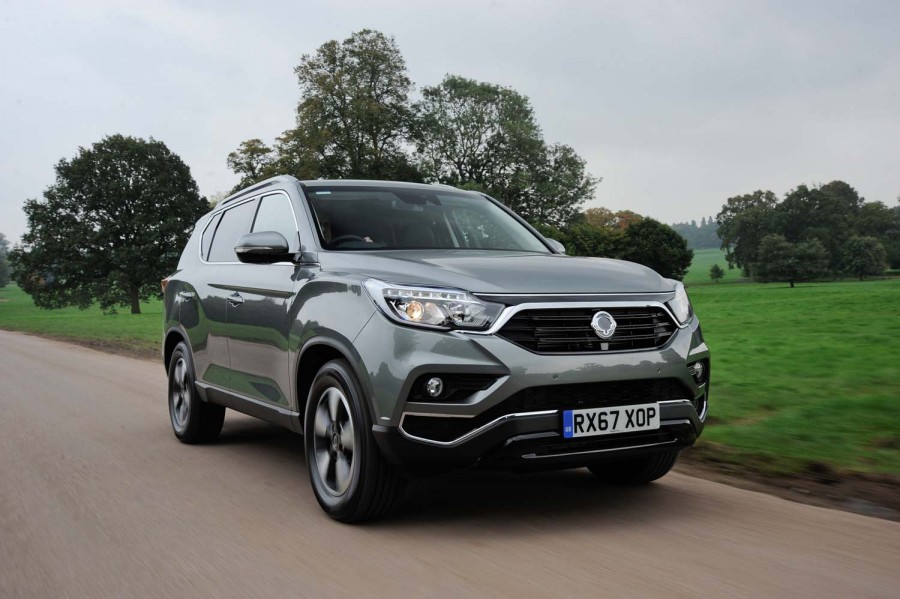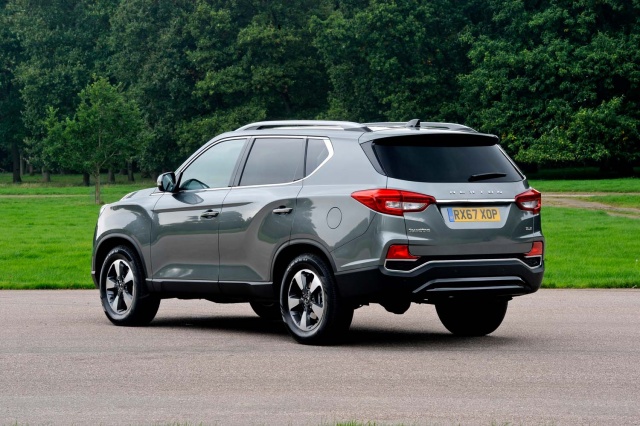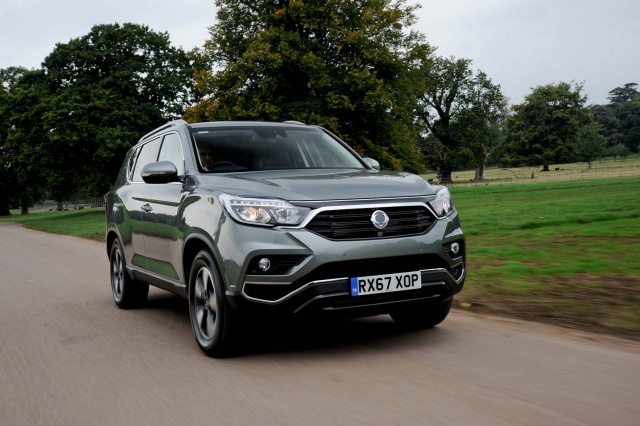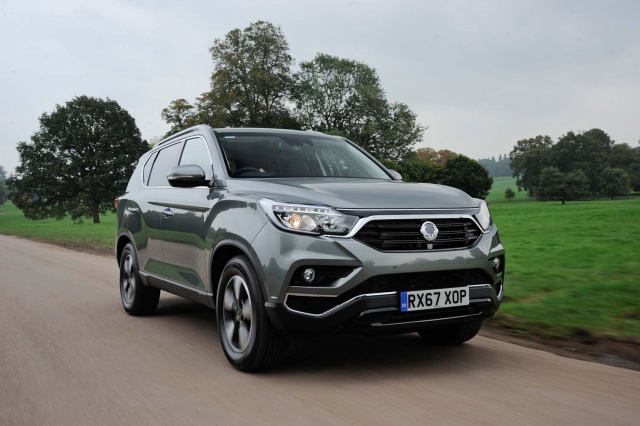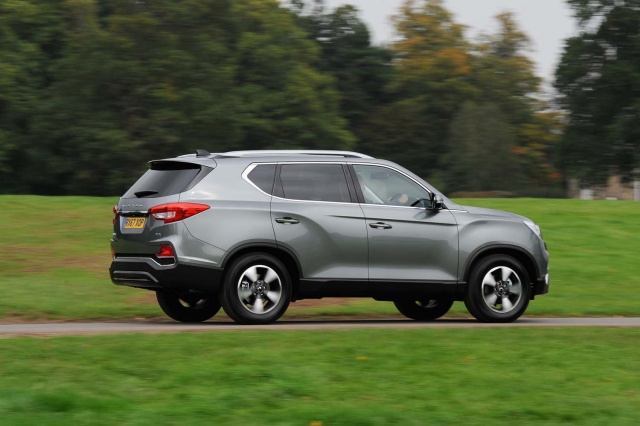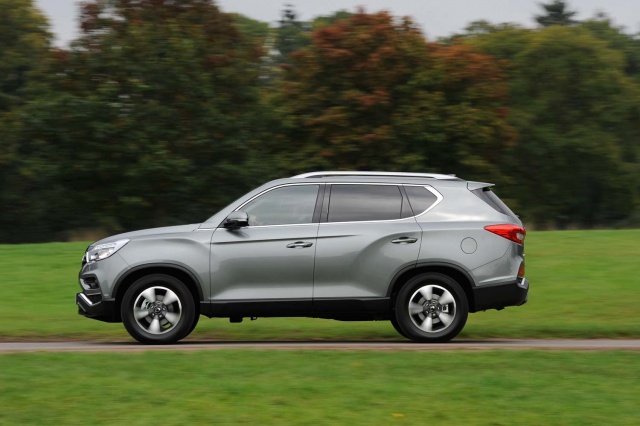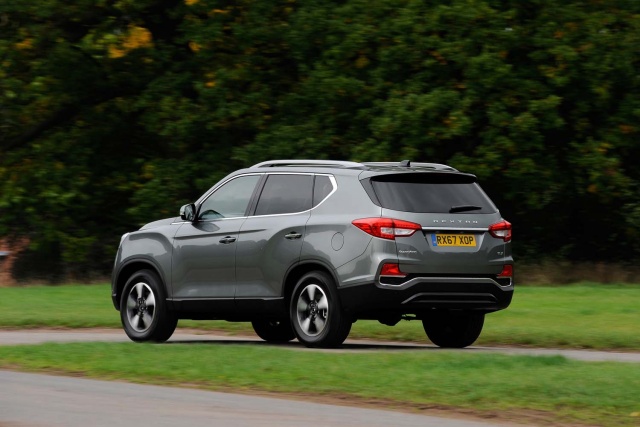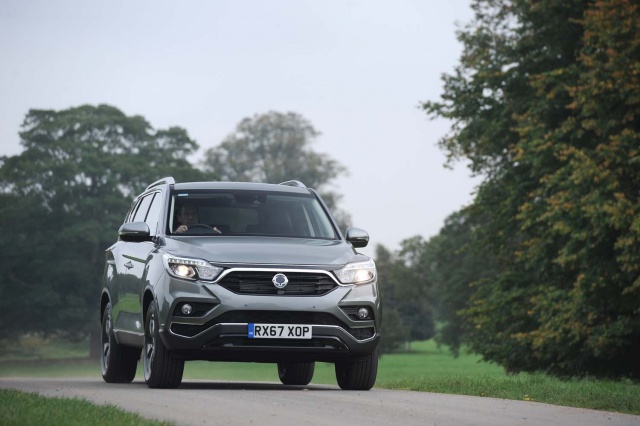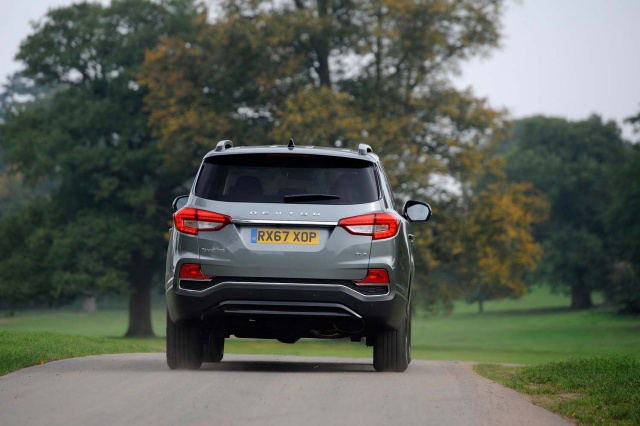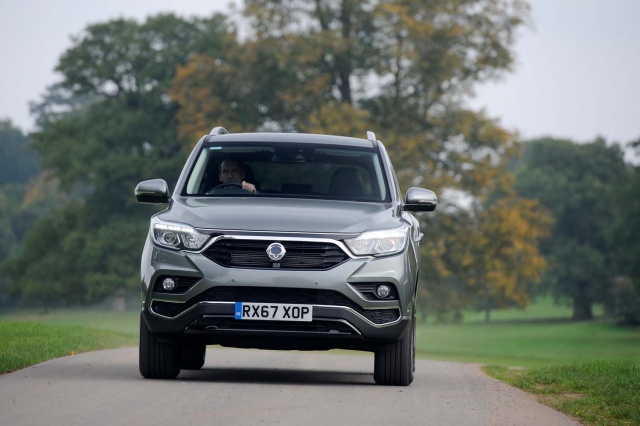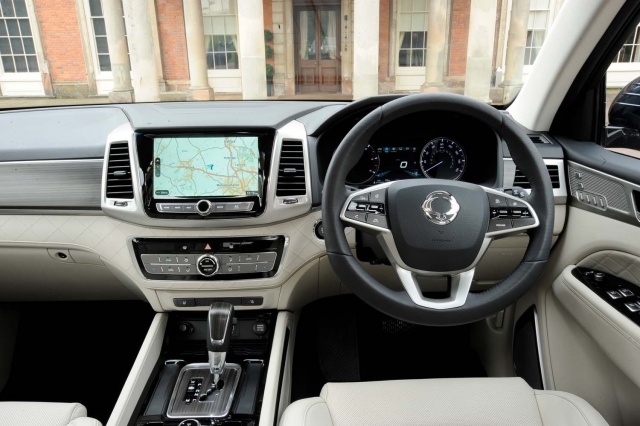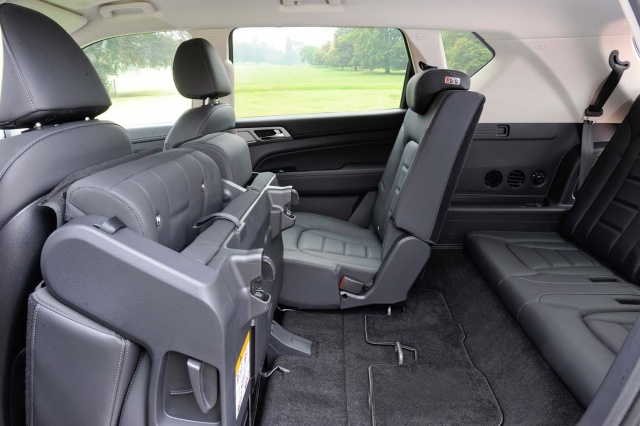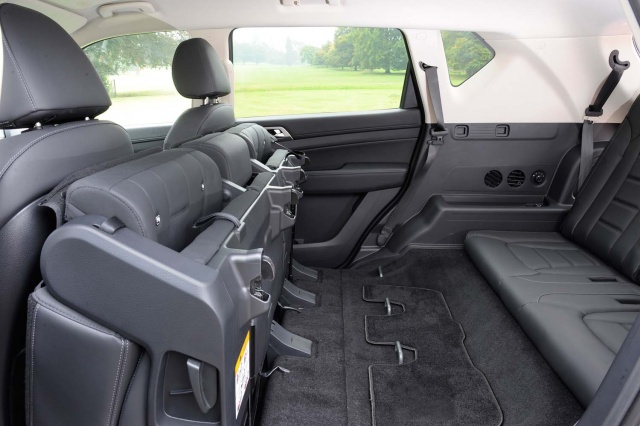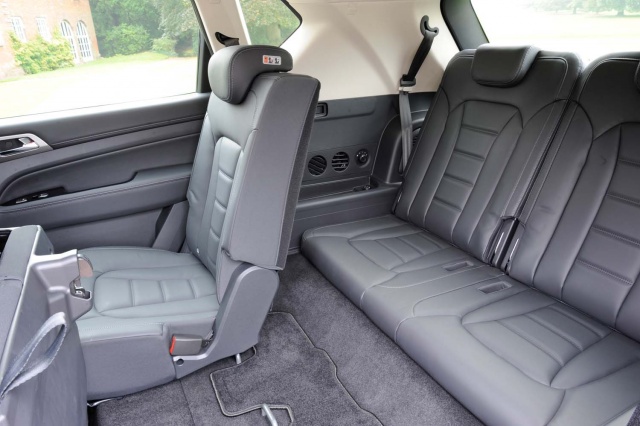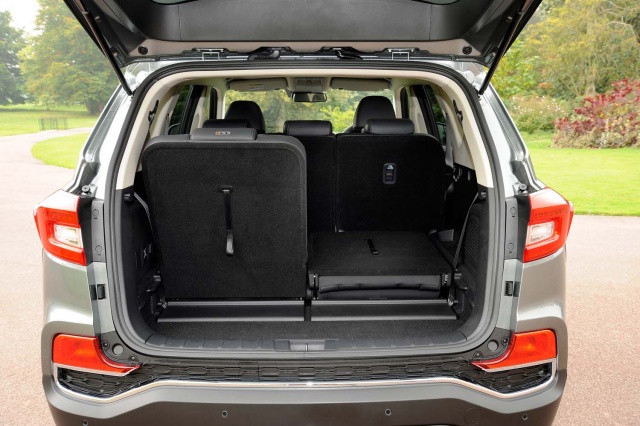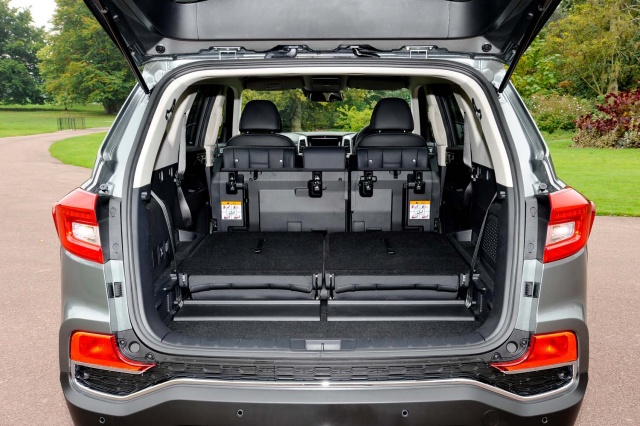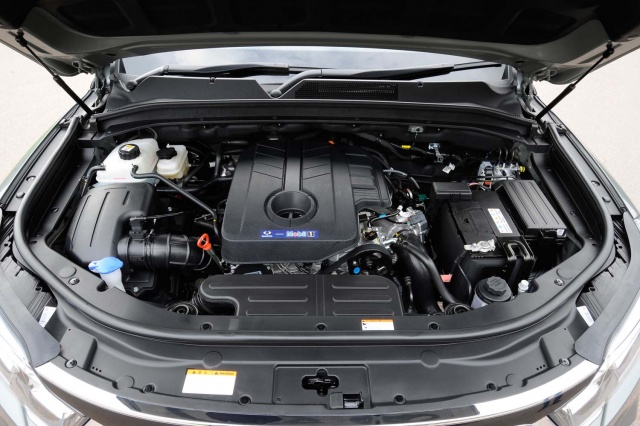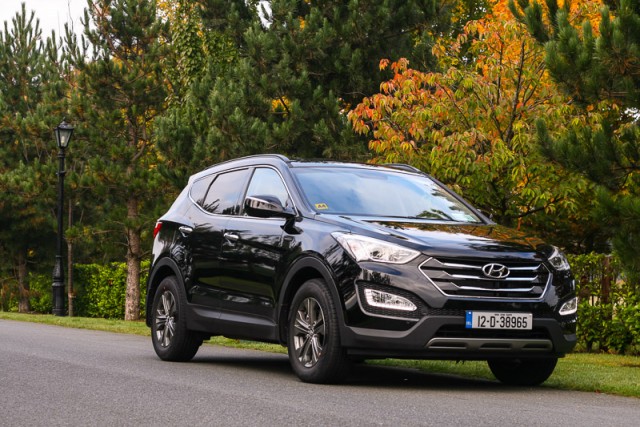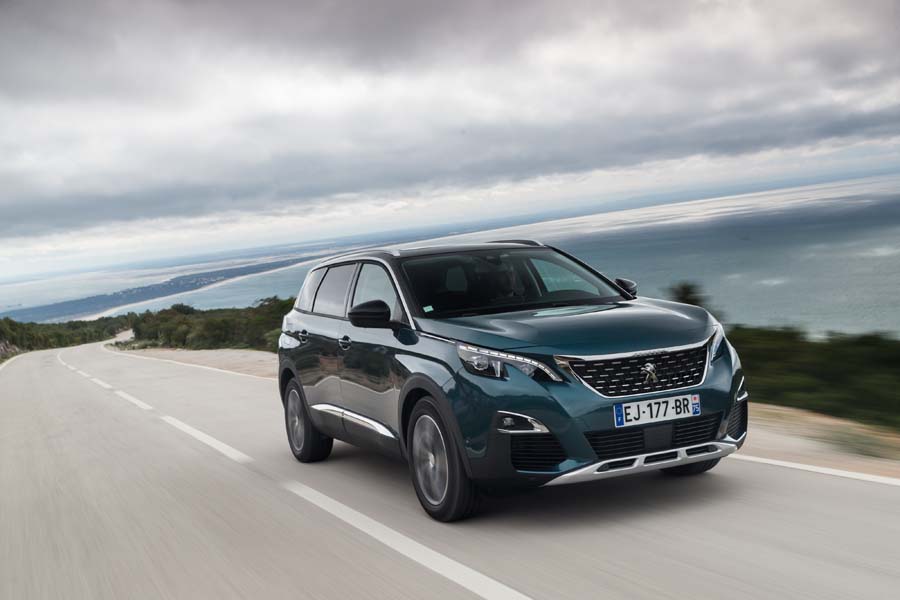It's clear to see that SsangYong, Korea's third automotive manufacturer, is striving to put itself on an upward curve and emulate the incredible transformation that its compatriots Hyundai and Kia have gone through in the 21st century. SsangYong, though, is clear that it will be an SUV manufacturer only (no city cars and the like) and so, after the Tivoli crossover, here it gives us a honking great off-roader in the form of the Rexton MkII. The best news? This machine has taken a giant step forward in terms of its all-round quality - so SsangYong's metamorphosis into a genuine contender looks like it is gathering some serious momentum.
In the metal
SsangYong's obvious attempt to appease European tastes with its exterior styling began with the striking Tivoli crossover and the mighty Rexton continues that to good effect. It's a physically giant thing, at 4.85 metres long, near two metres wide and 1.8 metres tall, which makes for an imposing presence - yet the Rexton manages to come across as chiselled and urbane in appearance. It's perhaps not the most handsome of vehicles in the class, granted, and we could do without the chintzy 20-inch chrome-finish wheels on top-spec models, but there's a general proportionality and likeability to the Rexton's shape that completely eradicates any faint memory you might have of the old model that was built since 2001. You're Googling images of that right now, aren't you, in an effort to remember what it looks like? Well, stop it.
If the exterior sets you to thinking that things might have been improved to the same standard inside, be prepared for a shock: the cabin is even better still. Compared to the sort of rock-hard, shiny plastics that have been used in Rextons (and SsangYongs) of yore, this interior is miles in advance in terms of the design, the ergonomics and the finishing. Again, we'll couch this glowing praise in context by admitting we're not at Volkswagen Touareg levels of solidity here, or even matching the standard of cabins of its Korean rivals Hyundai and Kia, but it's so, so close to the latter two that some might convincingly argue it actually IS as good as those vehicles.
You can spend ages searching around trying to find scratchy surfaces or bits of clunking switchgear, but if you've got a major downer on SsangYong joining the premium party then you'll become increasingly panicky as you encounter nothing but nicely rubberised column stalks, positive-feeling dash buttons and a pretty decent stab at touchscreen infotainment on an 9.2-inch display (on the higher models in any case; it's eight inches otherwise) in the dash. The only let-down here is the primitive mapping graphics of the satnav, which look a decade or so out of date already.
Despite this gripe, we particularly like the array of switches for the climate controls, the crisp digital screen that separates two 'projected 3D', attractive analogue dials in the instrument cluster and the good standard of leather hide used for the seats, dash top, pleasant multifunction steering wheel and the gear lever on the auto. The Ultimate models we tested also had quilted stitching across the middle of the main dash construct, which was a nice, premium touch.
The Rexton is also absolutely cavernous within, especially for five people. Seven-seat models are available and the maximum number of chairs is standard at base and mid-level, with five seats an option on that mid-grade version and standard on the range-topper (so don't go for the flagship if you're a family with more than three kids). If there are seats in the boot area, they have impressive legroom, but they're mounted in that traditionally low-to-the-floor position that means knees around ears for most passengers there, so keep them strictly for the kids. The middle row (or back row in the five-seater), however, has acres of space up to the front seats and so it's a big SUV that can really swallow the clobber. Talking of which, the boot itself is a massive 820 litres on the five-seat Rexton, dropping to 649 litres as the seven-seater as tested here. Fold all the back chairs away and these figures rise to 1,977- and 1,806 correspondingly; SsangYong won't say how much boot space is available with all seven seats fitted and in use, although looking at the strip of carpet between the rear-most seat-backs and the hatch makes us think it will be considerably less than 150 litres.
Where the SsangYong should attract customers is with the equipment count. Yes, we're waiting for exact Irish trims and specs to be confirmed, but assuming a three-grade line-up, the entry-level Rexton will have 17-inch alloys, air conditioning, a smart audio system with the eight-inch touchscreen, parking sensors front and rear, auto lights and wipers, cruise control, forward collision warning, autonomous emergency braking, lane departure warning, high beam assistance and traffic sign recognition. Plentiful, we're sure you'd agree. But the mid-grade brings in even more, such as 18-inch wheels, dual-zone climate control, heated and powered front seats, a heated steering wheel, keyless entry and go, nine airbags and TomTom navigation on the 9.2-inch screen. The top specification has everything: climate seats, a 3D around-view camera, more driver assist safety features, 20-inch wheels and a powered tailgate. The only options you can fit to it are metallic paint and a tow bar. That's what you call 'fully loaded'.
Driving it
It's perhaps worth starting here by admitting that the Rexton MkII is still built in the old-fashioned 4x4 way; that is to say, it is not of monocoque construction, but is instead a body-on-ladder-frame arrangement. This is to the benefit of its off-road and country-set prowess, an area where the Rexton has always excelled. It has a proper locking differential for its four-wheel-drive system, hill descent control, the ability to tow up to 3.5 tonnes of braked trailer and a general rugged, go-anywhere attitude that is at odds with its cultured styling and cabin - and some way in advance of the rough-roading abilities of any of its main rivals.
Of course, that does mean you usually sacrifice some on-road comfort as a result. Like its chief Hyundai and Kia SUV competitors, SsangYong offers just one 2.2-litre, four-cylinder turbodiesel engine in the Rexton, which can be paired to either a six-speed manual gearbox or a Mercedes-sourced seven-speed automatic. Now, opt for the manual and the Rexton's rear suspension is a live axle; fit an auto and you get a more advanced multilink set-up. Sadly, we didn't get to drive a manual Rexton of any sort on the launch, as all the cars available for testing were autos.
The diesel engine puts out 181hp and a useful 420Nm of torque, and it's not half-bad, either. If you're expecting it to rattle like the powerplant in a 30-year-old Massey Ferguson, you'd be miles away from the actuality. It does possess a clatter at start-up and if you rev it hard for maximum acceleration it becomes noisy, but in the 1,000-3,000rpm operating range that most people use on the roads, it's perfectly acceptable. It also bestows a fine turn of pace on the Rexton, even if the on-paper stats suggest otherwise, although the Mercedes gearbox is not the most impressive of its type. It has that odd SsangYong sequential thing, whereby manual control is handled by a little toggle switch on the side of the gear knob itself, which is just strange.
Regrettably, the two-piece make-up of the Rexton immediately comes to the fore on the road, where a shuddery secondary ride is a constant companion to cruising along main thoroughfares at 80km/h and above. It's exacerbated by the 20-inch wheels of the top-grade cars, so stick to the 18s - they do improve the overall comfort a great deal. This bobbly ride is the main negative, though, because in all other respects the Rexton is very well-sorted. Noise suppression is largely excellent, it has decent, precise steering, the brakes need a bit of a prod, but they work progressively and smoothly and the body control is surprisingly excellent for a ladder-frame SUV. There's a touch of lean during quick cornering, but the passenger compartment remains almost upright the vast majority of the time, which in turn allows the driver to lean on the chassis. Sporty, in a way something like a Porsche Cayenne is, the Rexton is not, but - ride aside - it's more than capable of performing as a reasonable daily driver.
And it remains defiant off-road and as a tow car. SsangYong gave us the chance to haul around a weighted horsebox, which the Rexton shrugged off as if it wasn't even there, while it also took on one of the toughest, muddiest and narrowest off-road routes we've ever seen with considerable aplomb. A BMW X5 would have wet its pants just looking at the course...
What you get for your money
We're waiting for Irish prices and specs to be confirmed, but it's not all going to be good news on this score. A leap in quality like this does not come cheap, so while the Rexton will still be worth checking out thanks to its extremely generous equipment levels across the board, its five-year/unlimited mileage warranty and its general size, it will no longer be sold at bargain basement prices. We're expecting it to be somewhere in the ballpark of the Rodius MPV, which starts at €39,995, so that puts it about on a par with the two obvious rivals - the Hyundai Santa Fe and Kia Sorento. Not ludicrously cheap, then, although SsangYong is positioning the Rexton as a 'Toyota Land Cruiser for considerably less money'. Brave.
There's one more consideration on the financial aspects and that's the SsangYong's dreadful green stats. For a 2.2-litre diesel in this day and age, 218g/km is borderline unacceptable and it results in the Rexton sitting in the next-to-highest Band F for road tax - or €1,200, each and every year. Don't think the manual models are any better; no Rexton drops below 200g/km, so they're all the same money to tax. As a comparison, the Kia Sorento 2.2-litre diesel with a manual gearbox emits 155g/km CO2, placing it in Band C at €390 per annum, less than a third of the SsangYong's yearly tax levy. Even worse, we actually saw an average 26mpg on a tame test route that we drove reasonably carefully, so the Rexton is incredibly thirsty for a diesel.
Summary
The second-generation SsangYong Rexton has not managed to go from complete novelty, bargain also-ran to class leader in one fell swoop, but what it has done is moved a huge distance in the right direction to at least sit among the leading pack of big SUVs. It has a suspect ride, dim-witted automatic and it isn't likely to be as inexpensive as it once was. Yet in all other respects, it's a really rather marvellous effort from the Korean company and a 4x4 that should most definitely feature high on your shopping list if you're someone who spends their weekends hauling around large loads in trailers, and their weekdays in town centres doing essential shopping. SsangYong is moving in the right direction, and it seems to be moving at a fair old speed, too, if the Rexton is anything to go by.

